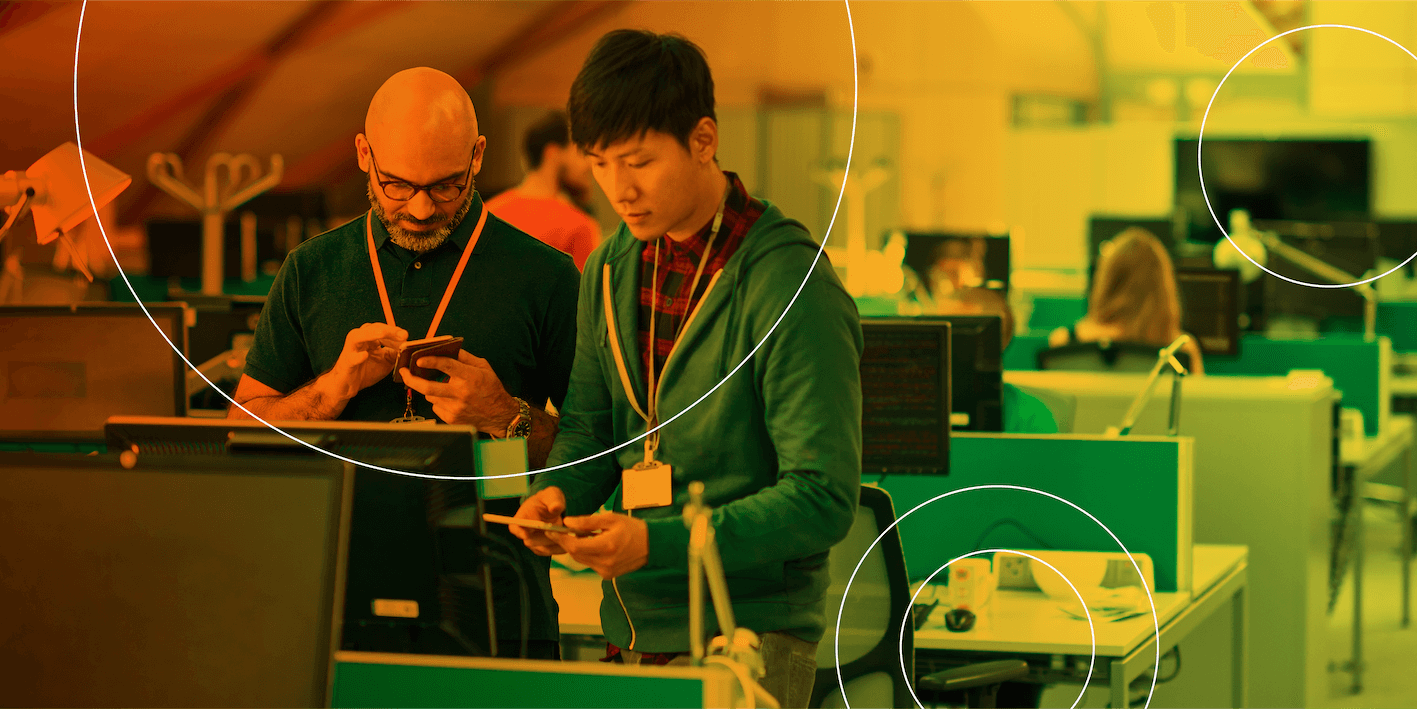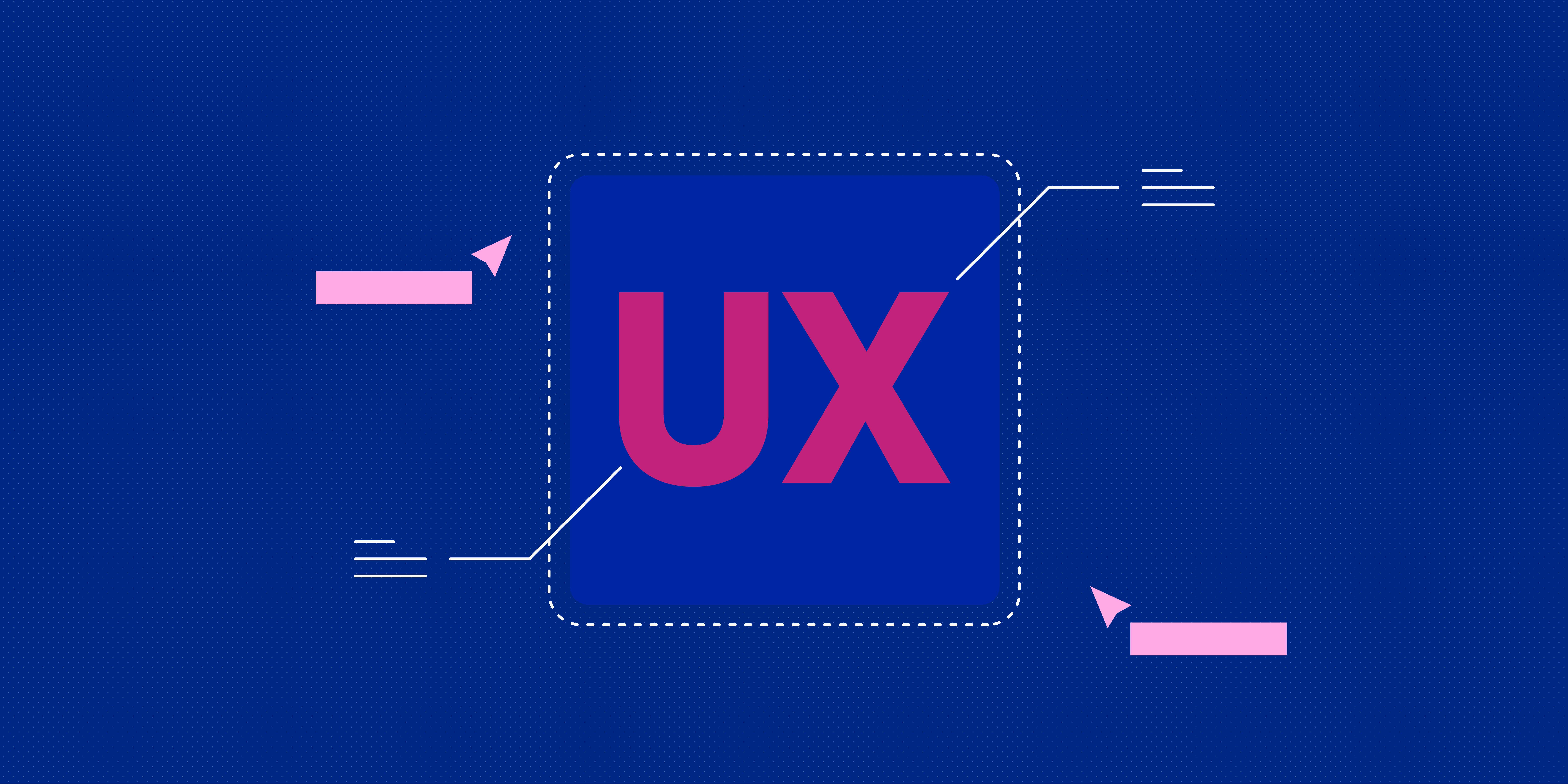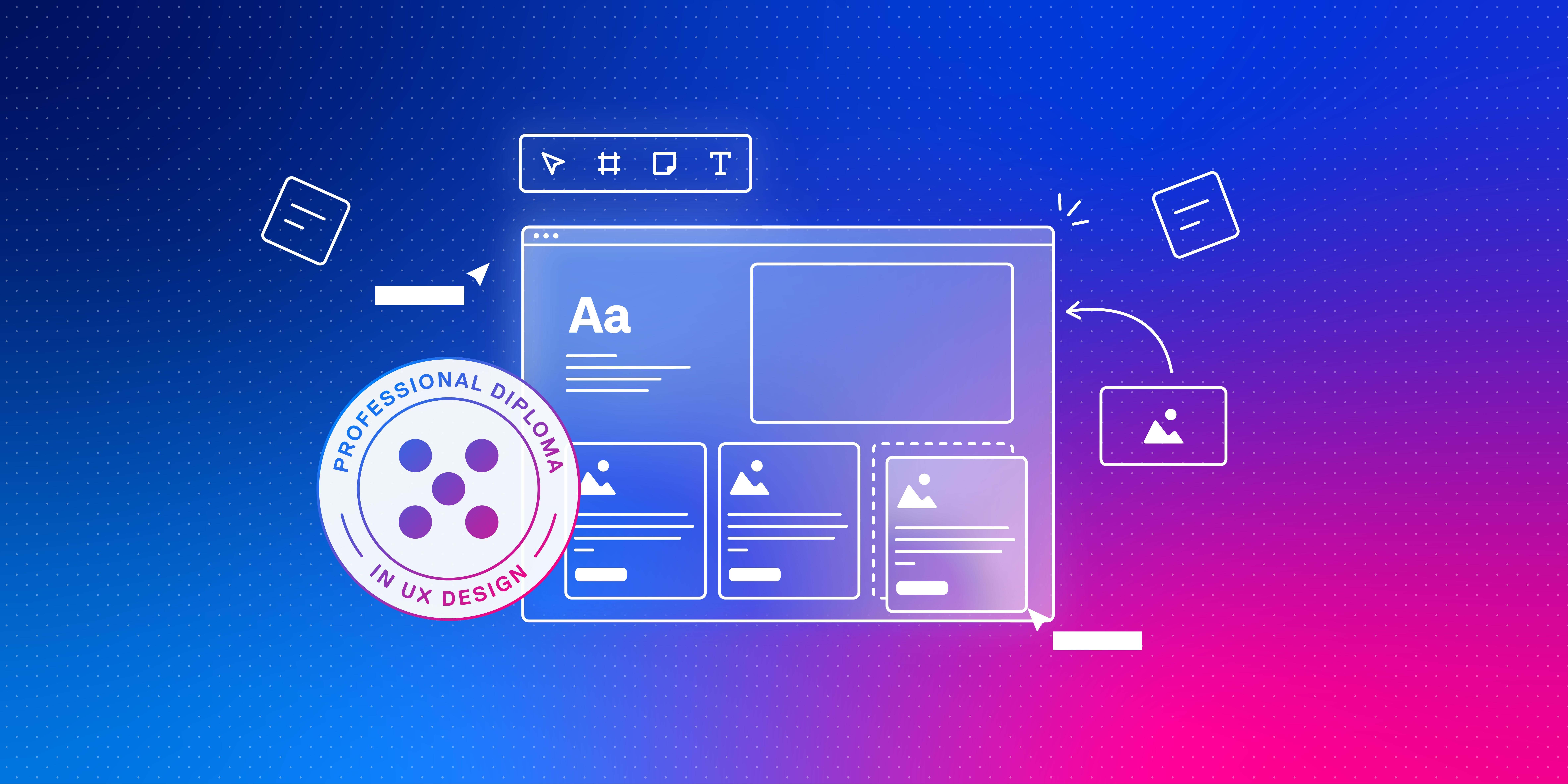UX design is an extremely rewarding job in its own right. And, because it’s such a collaborative and multidisciplinary role that touches all aspects of the product development process, it’s an excellent gateway into a career in tech too.
If you’re new to UX design, you might be wondering what doors could open for you later on in your career. If you’ve already been working as a UX designer for a while, you may be thinking about how you can start moving into another tech role.
Whatever your career goals, working in UX provides an excellent opportunity to not only learn about other jobs in tech but also to acquire skills that can be transferred to different tech career paths further down the line.
Curious about how UX can prepare you for the wider tech industry? Keep reading to see how UX design overlaps with other tech roles, the indispensable tech skills it’ll teach you and some of the most in-demand tech jobs that UX designers can move into.
How does UX design overlap with other tech roles?
The role of the UX designer is to create products or services that solve user problems and provide an exceptional end-to-end experience. At the same time, they are responsible for ensuring that the products or services they design also meet business goals.
Because user experience is so integral to the success of a product or service (and, by extension, the success of the company and its brand), UX designers work closely with professionals from all corners of the business. They collaborate with web developers, product managers, product marketers, data analysts and other designers — essentially everybody who is involved in the product or brand in some way.
As a result, UX designers are not only experts in user experience. They’re also well-versed in all the other aspects that contribute to a successful product or service, such as:
- The technical expertise that goes into coding and developing a digital product (as carried out by web developers)
- The strategy which informs the product, typically defined by the product manager
- The techniques used to launch and market the product
- The methodologies and practices used by project managers
- The process of collecting and analysing data to monitor the product’s performance (usually managed by a data analyst)
Throughout the UX process — which spans user research, problem definition, designing and prototyping, right through to testing and launching the product — UX designers utilise a variety of skills that are transferable across the tech industry. By collaborating with other tech professionals along the way, they gain first-hand insight into all the different roles that make up a successful tech team.
So what skills will a career in UX teach you and where else can they be applied in the tech industry? Let’s take a look now.
What skills will a career in UX teach you and how can they be transferred to other roles in tech?
One of the best things about UX design is that it develops a highly varied skill set. Once you’ve worked in UX, you’ll find that you’re already well-equipped for many other roles in tech.
Some of the main skills and expertise you’ll develop as a UX designer include:
- An understanding of business and product strategy
- The ability to conduct and analyse research
- Project management (and related software and tools)
- A deep understanding of user interface design, as well as proficiency in industry-standard design and prototyping tools
- Familiarity with programming languages and technical product requirements
- Communication, collaboration and presentation skills
- Familiarity with the agile methodology and related practices
This is not an exhaustive list but it does highlight some of the key UX design skills that are transferable to other exciting roles in the tech industry.
Now let’s take a look at some of the most in-demand tech jobs (besides UX design) and how a career in UX will help set you up for these various roles.
5 in-demand tech jobs that UX designers can move into
Whether you want to move into another digital design job, delve deeper into product management or take on a more analytical role, your UX design skills will help you make the transition. Here are some of the most sought-after jobs in tech and how they overlap with UX design.
1. Web developer/software engineer
Web developers and software engineers are responsible for building the digital products that UX designers come up with. They take the prototypes created by UX and UI designers and code them into actual websites and apps.
UX designers work closely with web developers, especially when it comes to transitioning from concepts and ideas into the building phase. While coding isn’t part of the typical UX designer’s skill set, they do usually have an understanding of the programming languages being used and the technical constraints they need to operate within when designing digital products.
Working in UX, you’ll find yourself exposed to how developers work and the tools and languages they use. You’ll learn to communicate with technical teams and gain an understanding of how designs are turned into live products. This, together with your UX expertise, will set you in good stead if you one day decide to move into a more technical role.
The UX Design Institute’s Certificate in Software and Coding Fundamentals in UX is a great way to start understanding the responsibilities and language of a web developer.
2. Product manager
Product manager is one of the fastest-growing jobs in tech and UX designers are among the best candidates for taking on such a role.
Product managers are mostly strategic; they determine which user needs and business objectives the product should fulfil, set success metrics for the product and ultimately ensure that it’s on track to do well in its market.
Does that sound familiar? That’s because there’s plenty of overlap between UX design and product management. A crucial part of the UX designer’s work is balancing end user needs and business goals — a skill which is directly transferable to product management.
And, just like UX design, product management requires business acumen, strategic and critical thinking, research and analysis skills and, perhaps most importantly, empathy for the customer. If you’re familiar with the process of defining a UX strategy and conducting user and competitor research (as most UX designers are), you’ll have a strong head start when it comes to product management.
3. Data analyst
Another increasingly popular role in tech is that of the data analyst. At first glance, you might think that data analytics and UX design are worlds apart but actually, a career in UX will equip you with some of the fundamental skills you would need if you ever wanted to move across.
Data analysts are responsible for gathering and analysing data in order to help business stakeholders make informed decisions and take data-driven actions that will move the company towards success. And you know who else works with data? UX designers.
User research and usability testing are two major components of the UX designer’s role. They each involve gathering both qualitative and quantitative data and analysing and synthesising it to uncover valuable, actionable insights.
While UX designers may not work with data as intensively as data analysts, they are certainly familiar with analytics tools and methods, as well as the art of presenting data in a way that’s meaningful for others. These skills aren’t easy to come by and they’ll make the transition from UX to data analytics much smoother.
4. User interface (UI) designer
UX and UI designers work closely together as part of the same team, so UI design is perhaps one of the most obvious upskilling opportunities for UX designers.
There’s a distinct difference between UX and UI design. To simplify, UX designers focus on the end-to-end user experience, defining the user problem the product will solve and ensuring that it’s structured in a way that’s logical and easy to navigate. UI designers take care of how the final website or app looks, including the elements and interactive properties the user needs in order to use the product.
Differences aside, you can’t have one without the other. Good UX is reliant on good UI and, equally, a beautifully designed user interface is pointless if it’s simply painting over the cracks in a bad user experience. As such, UX designers are well-versed in what UI designers do, the principles and guidelines they follow and, generally, what good UI design looks like.
If you’re a UX designer looking to broaden your skill set and become an all-rounder or if you want to move into the more creative, visual side of digital design, UI design is well within your reach. You’ll have worked closely with UI designers throughout your UX career and shared some of the same tools, so you’re already on your way.
You can learn more about the differences between UX and UI in this video by the UX Design Institute’s CEO Colman Walsh:
5. Project manager
Another role commonly embedded in tech teams is the project manager. Project managers are responsible for planning and organising individual projects to ensure that they’re completed on time and within budget.
They are required to have excellent communication and collaboration skills, to manage multiple projects and stakeholders at once, to handle competing priorities and to continually optimise processes to keep things running smoothly.
And you guessed it. These are all skills you’ll master in your role as a UX designer. In fact, effective project management is integral to a successful career in UX and you may even find that you’ve already worked with some popular project management tools (such as monday, Trello and Asana).
Whether you’ve got upskilling or a career change in mind, you’ll find plenty of crossover between UX design and project management.
How to springboard from UX into another tech career path
As we’ve seen, a career in UX can open up many exciting doors in the tech industry. If you’re keen to springboard from UX into another tech role, be sure to:
- Focus on and emphasise your transferable skills. Draw as many parallels as possible between your current role in UX and the role you’re aspiring to and highlight the skills you’ve already got. This will help you position yourself as an experienced tech professional rather than a complete newcomer.
- Take a course to close any skills gaps. While drawing on your strengths and transferable skills, take proactive steps to learn the additional skills you’ll need to thrive in your new role. There are countless courses out there for all different levels, so find the one that best suits you and build dedicated learning time into your schedule.
- Seek opportunities to grow and upskill within your current role and company. There’s plenty of overlap between UX design and other tech roles, so look out for opportunities to incorporate practices from different disciplines into your existing work. For example, if you’re keen to become more data-driven, consider experimenting with more advanced analytics tools next time you’re handling user research data. And, if possible, request to shadow the data team in your company or to help them with a project. Gaining hands-on experience is the best way to learn and it’ll help you to prove that you’re qualified for your next role.
Ultimately, tech professionals rarely operate as lone wolves. Roles within the industry intertwine and overlap, so transitioning from one to the other may not be as tricky as you think. And, with its varied skill set and highly collaborative nature, UX design is an excellent gateway into the exciting world of tech.
Are you new to UX design? Here’s how to learn UX and get started in the field.




